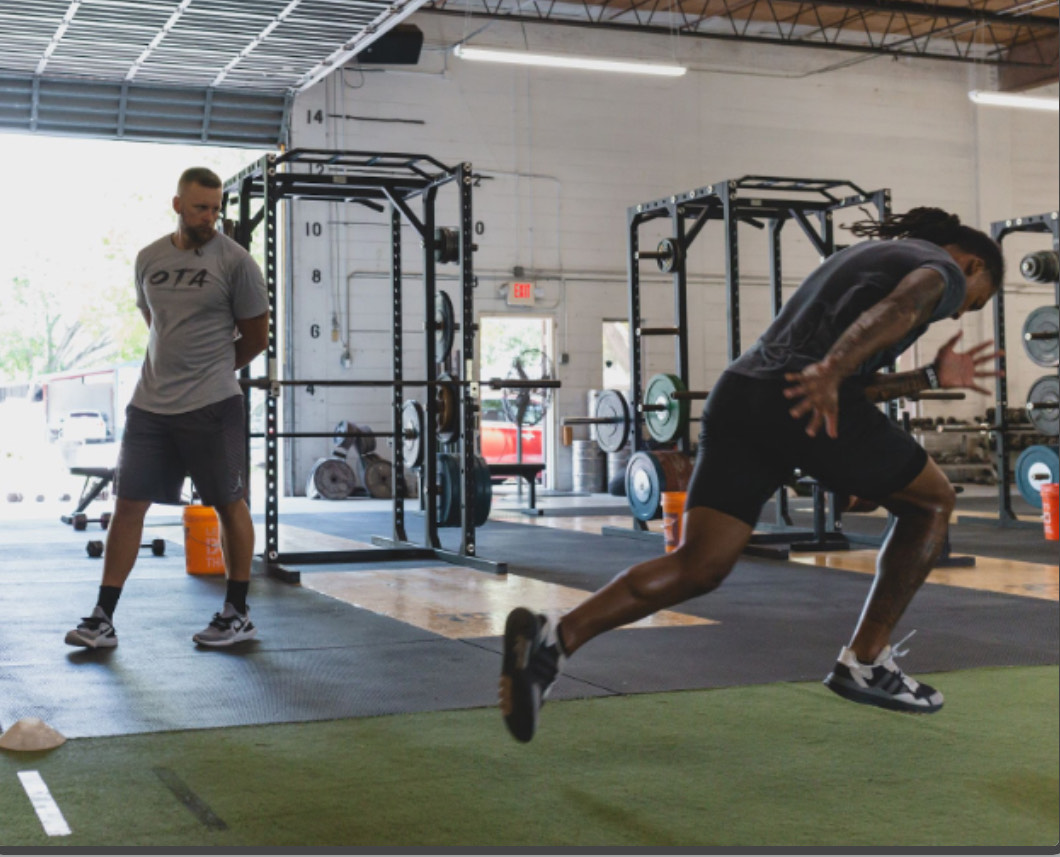My Top 3 Top Speed Drills for Football
It’s no secret that speed has become king in football today.
On both sides of the ball. That’s why the 40 yard dash has always been so coveted and crucial for players during the combine. Everybody wants to see the 4.2 and 4.3 times. That’s why you see more and more guys in the NFL today that can burn a defense for long gains at any moment. Even at the quarterback position the game has shifted to QB’s that are fast enough to scramble and beat defenses for long gains. You can have great tape and put up great numbers, but if you run a bad 40 time, you’re most likely dropping in the draft.
In the first round of the 2024 NFL draft you saw guys like Xavier Worthy (WR, Chiefs) run the fastest 40 ever with a 4.21. Nate Wiggins (CB, Ravens) run a 4.28, fastest time in that defensive back draft class. The runner up to Wiggins ran a 4.33. NFL linebackers today have even changed from bigger hitters like back in the day (Ray Lewis, Brian Urlacher) to slimmer and faster guys who can play more in pass coverage. It’s not uncommon now for football players to also be sprinting in track to develop their top speed. 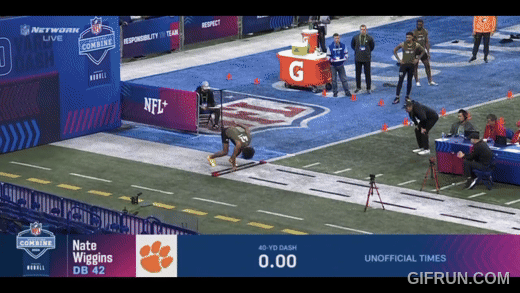
The game today is about speed.
When I played football in high school and got to college, the biggest mistake I made was never doing speed work. I loved lifting heavy, getting big and getting strong. Everything was about getting as strong as I could and putting on as much muscle as I could. That did not help me become a better athlete though. I was just big, strong, and SLOW. It wasn’t until my second year of semi pro football that I slimmed down and spent more time on the field working with wide receivers and defensive backs (I was a linebacker/defensive end) that I really saw performance on the field improve.
Now being a coach for the past 7 years and helping young athletes improve their performance and develop their speed, I’ve really learned more and more about speed development and practical methods to make my athletes faster. So for this article, I wanted to share 3 of my favorite drills for developing athletes top speed. Not to be confused with acceleration (I’ll share a blog for that), which is the first 10-15 yards out of your 40 or your ability to get to top speed.
With top speed I’m talking about your ability to outrun your opponent. To beat the defense for the long gain or get to the second level and burn everyone for the touchdown. On the defensive side, being able to catch guys like that and chase down or keep up with them on long plays.
So here are 3 of my favorite exercises for developing top speed:
Single Leg Bounds
This is a very advanced unilateral plyometric for developing both vertical and horizontal force. It’s a very high impact drill that requires a high level of stability and power. Not recommended for less advanced or deconditioned athletes. This is a drill we would use in the later phases of our programming when we’re trying to peak the athlete and really maximize their force output.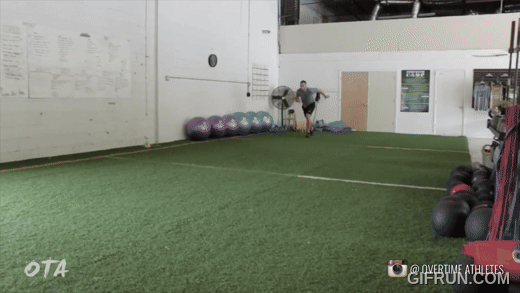
If an athlete isn’t advanced enough or lacks the necessary strength and power, they won’t even be able to really get their foot off the ground to successfully perform each bound. That’s why it’s crucial this drill is properly progressed and the athlete is well trained before implementing this.
I love this drill because it’s unilateral and isolates and improves the rate of force production in each leg separately. This helps improve any asymmetries and imbalances between each lower limb. Also, the way this drill is performed, it really translates to the top speed mechanics of the hip due to the need to really fully cycle the hip and attack the ground into each bound. The athlete is projecting horizontally but also fighting gravity vertically, which is crucial in top speed.
Wickets Drill
This is a mechanical drill to really emphasize top speed mechanics and improving the athletes stride and touch down. When we perform this, we really want to emphasize an upright and stiff torso, light foot contact, and the full cyclical actions of the hips. To set up, you can use mini hurdles or cones. Preferably mini hurdles because this will force the athlete to get their knees up and work on their hip action. 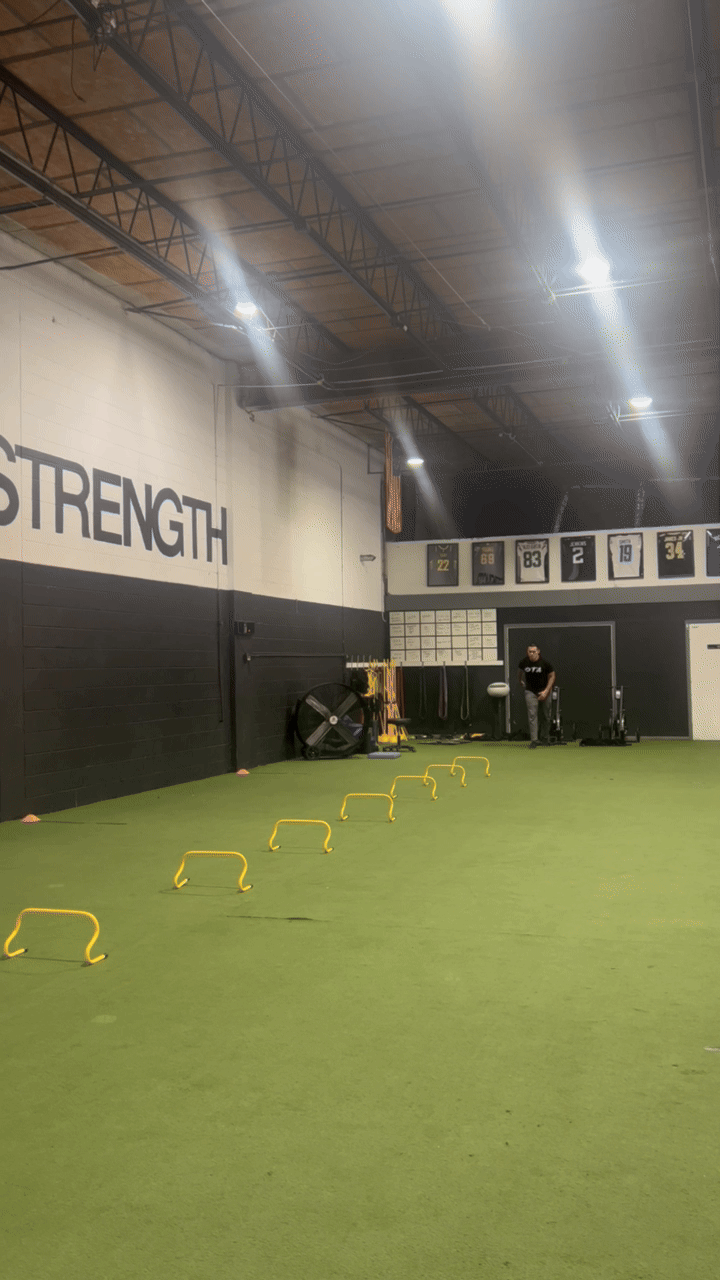
You set the hurdles/cones up to increase in distance as they get further over 15 to 20 yards. This is to train the athlete to open up their stride length and produce the right amount of force at touchdown in order to reach the next hurdle. We also want the athlete to work on fast and light foot contact. As they do this drill, a cue I like to give is think like you’re running on water or thin ice. You want to eliminate heavy feet as they perform the drill.
Again, really emphasize a tall upright torso as well. If your athlete has to reach with their leg in order to clear each hurdle, then adjust the hurdle distance closer. Don’t risk hamstring injury from overreaching. Their foot contact should never be out in front of their body. Make sure the athletes ground contact is under their center of mass.
Resisted Sprints
So really this is more about maximal effort than it is about any specific top speed mechanics. Fact is, if you want your athletes to improve their max speed, then you need to push them to sprint with max speed and intensity. This is where you’re forcing them to raise their effort and output. Resisted sprints are also a great way to train and improve powerful hip extension to help them produce more horizontal force.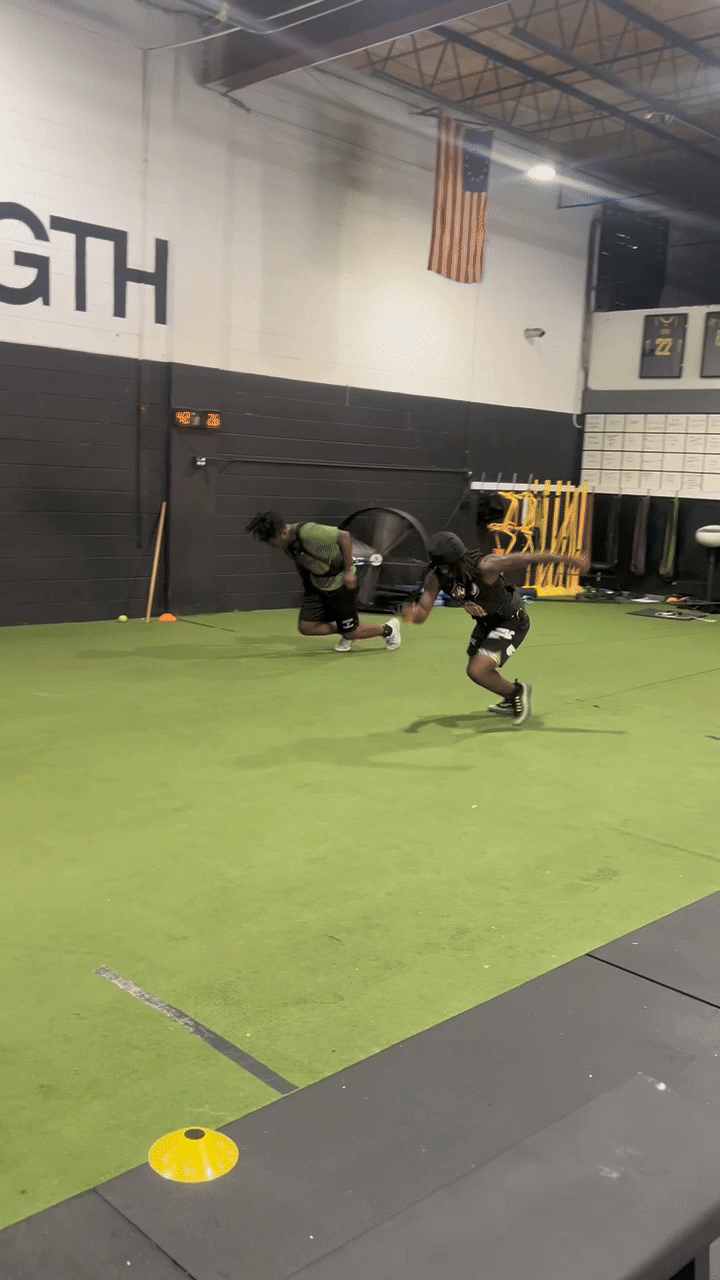
We have the Run Rockets at our facility, but resisted sprints could also be pushing/pulling a sled or hill sprints. Either way, you just want the athletes really performing each rep with max effort. Make sure they’re resting between each repetition. Speed is built with quick bursts of maximal energy, not back to back to back with little or no rest in between. That would turn it into an endurance drill.
So those are my 3 favorite drills to incorporate into my football athletes speed programming. Not saying they’re the best. There’s so many great drills we incorporate into speed training. Try these in your football training or your football athletes programming.
If you have any questions or are interested in online training, please reach out to me anytime at jordon@overtimeathletes.com.
